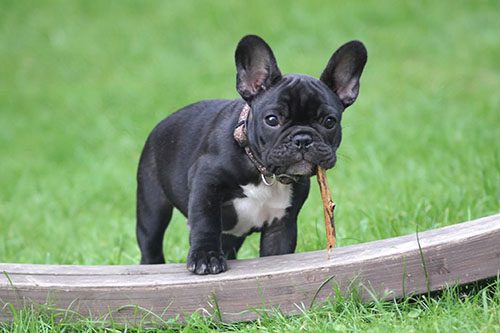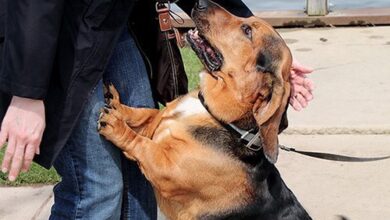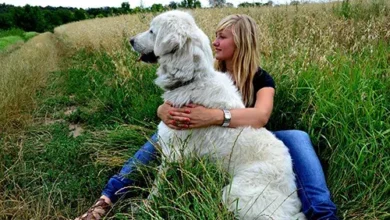How to teach your puppy his name?


Finding a name for a puppy is always quite tricky, it sometimes turns out to be a real headache. When it’s done: congratulations! But the hardest part is yet to come: teach your puppy his name.
Here are 8 tips for teaching your puppy his name:
Tip n°1: The right choice of name
First of all, before you even want to teach your puppy his name, it is advisable to choose a name that is easy to say on a daily basis and catchy. It is therefore advisable to choose a name not exceeding two syllables.
Even before having your puppy at home, do not hesitate to regularly pronounce its name out loud, followed by an action such as: “Midor, come here!”. So you will know whether or not it sounds good and whether this name is easy to use on a daily basis.
Tip n°2: Foster an unstimulating environment
To start learning, whether it is the name of the puppy or something else, it is very important to place yourself in a non-stimulating environment.
Indeed, a puppy can easily be distracted, if only by a flying leaf! In fact, I advise you to offer him work sessions in places he knows, if possible inside.
In addition, preferably be alone when you start an apprenticeship. It is only later that you can add difficulties: learning outdoors, among people, alongside other dogs, etc.
Tip n°3: Create a Positive Association
The dog learns mainly by conditioning. The goal here is to make your puppy understand that his name “Fido” is always followed by a reward.
This learning allows you to teach your puppy his name, but also to start learning to recall!
Take advantage of your puppy’s young age to create this positive association, this is the age when he will be most receptive.
So, regularly, a few minutes per session, say “Fido” and at the same time give your puppy a treat. Subsequently, he will therefore be intrigued and interested when he hears this word, his name.
Tip n°4: Adapt your voice intonations
To attract your puppy’s attention, do not hesitate to have a very high-pitched voice to encourage him to come towards you. This intonation will also create strong motivation.
If you have a deep voice and a firm tone, your puppy will have very little desire to come to you, whereas, conversely, if you have a playful and dynamic voice, he will be much more interested.
Tip n°5: Neither sanction nor insist in case of failure
If your puppy is completely ignoring you, don’t scold him! He is completely unlearned, so you can’t blame him for not knowing or understanding what you expect of him!
It’s up to you to question yourself and look for the reasons for this failure: is it the environment that is not suitable, your attitude that is too closed, or your voice that is too serious? It’s up to you to analyze and observe what’s stuck.
However, do not insist either if your puppy does not care that you are there to call him. Readjust your attitude (raise the treble, tap your legs, crouch, etc.) but if you see that your puppy continues to ignore you, then do the same.
At the next session, you will opt for a less distracting environment, for more attractive rewards for your puppy or for a more open attitude. You can even put a thin leash on it to keep control and carry out the initial conditioning: “his name” = treat.
Tip n°6: Adapt learning sessions
Above all, do not work too long with your puppy, he will need to rest between each session, go out to play and go for a walk.
Name learning sessions should not exceed 5 minutes, but can be repeated several times a day, of course.
In addition to learning by conditioning, the dog learns by habit. Thus, the more regular and consistent you are in the sessions, the faster the learning will be.
Tip n°7: Secure learning while bringing difficulties
As soon as your dog responds perfectly to his name inside and has understood that it means: to come back to my master and have a treat or any other form of reward, you can then make the exercises more complex.
Of course, do not go too fast at the risk of having to return to the starting point, but you can offer your puppy work sessions in the garden, then on a walk (always on a leash to guarantee his safety), then in a park with other dogs, etc.
Tip n°8: Have a consistent attitude
However, be careful of your consistency! If you have difficulty getting your puppy to respond to his name when he is at home or in the garden, don’t expect it to be any different when he is playing with fellow dogs in a park, for example.
So be perfectly fair and consistent in what you ask your puppy so as not to put yourself in a situation of failure.
In addition, always think about your bodily attitude which must also be consistent and adapted to each learning process:
- Have a smile
- Lean or crouch down to your pup’s height to call him
- Pat your legs or the floor to entice your pup to come
- Do not advance towards him but step back to “suck him up”
Finally, of course, when your puppy recognizes his name, whether by a simple look, a flick of his ears or even better, a return to you: congratulate him very warmly by means of treats, toys or other rewards that your puppy particularly likes.






